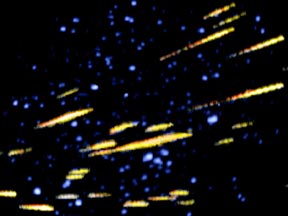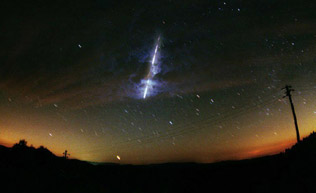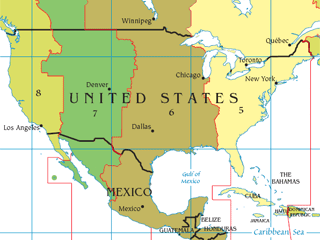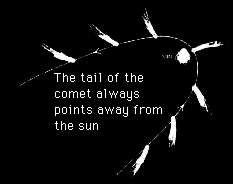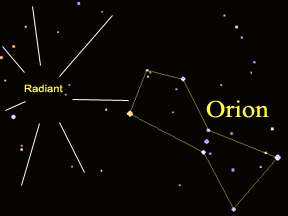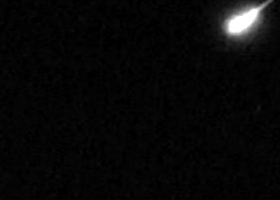
Image courtesy George Varros.
Geminid Meteor Shower
The Geminid meteor shower is one of several major meteor showers that occur on roughly the same date each year. The Geminids typically "peak" (are at their greatest level of activity) in mid December. The Geminid shower's name is derived from the fact that its meteors appear to fan out from a point in sky, called the shower's "radiant", which lies within the constellation Gemini.
Unlike most major meteor showers, which people have known about for a very long time, the Geminids were first seen in 1862. Around that time, astronomers counted only about 15 Geminid meteors per hour during the peak of this shower. Gradually over the years the Geminids have been growing, so that we now often see 120 or even as many as 160 meteors per hour.
In general, meteors in showers are actually bits of dust that have been shed over the centuries by a comet. The dust, which spews forth from the comet's nucleus each time it passes near the Sun, gradually spreads out over the entire orbit of the comet. If Earth's orbit happens to cross the comet's orbit, the swarm of debris scattered along the comet's orbit is visible to us as a meteor shower. Since the Earth crosses the comet's orbit at the same time each year, each meteor shower is predictably visible at the same time of year, year after year.
After the Geminids were first observed in the 1860's, astronomers began searching for the comet from which these meteors came. Many, many years passed, and still the scientists could not find the comet that "gave birth to" the Geminids. Finally, in 1983, an object with an orbit that matched the Geminids turned up in pictures from a satellite named IRAS (Infrared Astronomical Satellite). But the pictures puzzled astronomers, for the object appeared to be a dark, rocky asteroid... not an icy, bright comet as was expected. The object was named asteroid 3200 Phaethon.
Astronomers are puzzled by 3200 Phaethon. Did the asteroid collide with another asteroid at some point in its orbit (it does pass through the relatively crowded main asteroid belt), knocking clouds of debris off of 3200 Phaethon... and thus producing the Geminids? Or is 3200 Phaethon actually a comet in disguise; one that has passed the Sun so many times that all of its ices have been melted away, leaving just a darkened, rock-encrusted remnant of its former "giant snowball" self. Scientists still aren't sure which is actually the case.
Most meteors in a shower are quite small, about the size of a grain of sand. Geminids move at average speeds for meteors. They typically strike our atmosphere while traveling at speeds around 35 kilometers per second (about 78,000 mph). Geminids often leave yellowish colored trails as they zip through the atmosphere.






